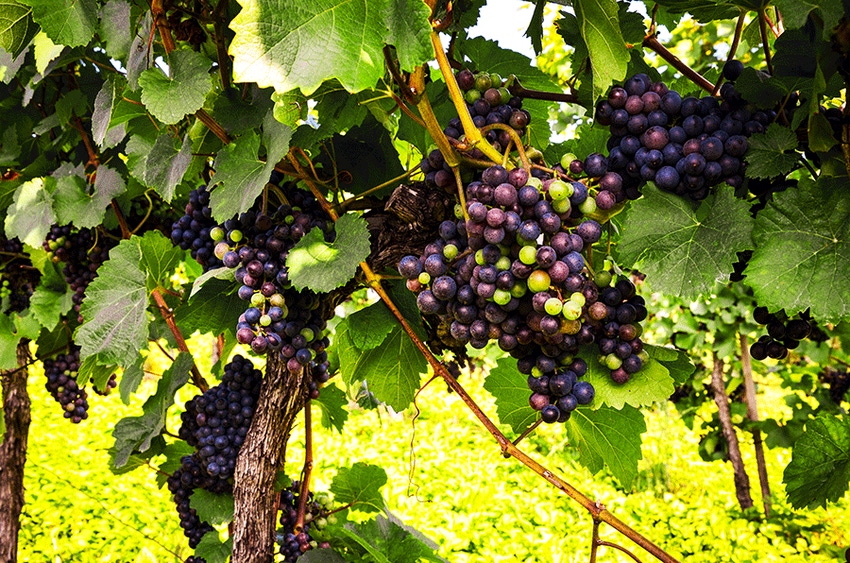
Among the most common headaches that grape growers encounter as their crop is developing is sugar accumulation disorder, or SAD, say University of California advisors.
Field studies involving E & J Gallo Winery and UC researchers have been under way near Clarksburg, Calif., to find solutions for SAD, which causes poor berry coloration and low sugar accumulation. It is triggered after veraison, according to Chuck Ingels of the UC Cooperative Extension in Sacramento County.
SAD has been known by various names, Ingels explains in an article on the UC Division of Agriculture and Natural Resources website. It was formerly called berry shrivel and waterberry, and Washington State University’s Bhaskar Bondad dubbed it SOUR shrivel — suppression of uniform ripening. That also aptly describes the taste of affected berries, Ingels says.
But despite the varied terminology, methods of control of the malady have been elusive, causing no small amount of frustration for vineyardists.
“There’s nothing like tending a nice crop of grapes all season, only to watch a portion of them shrivel and having to drop them before harvest,” Ingels writes. “Berry shrivel has been a malady of some vineyards throughout the West Coast for many years.”
DISTINCTIVE CHARACTERISTICS
There are actually several causes of mid-season shriveling of grapes, and each has distinctive characteristics, culinary scientist Mark A. Krasnow and others explained in a 2010 essay in the journal California Agriculture. One is sunburn, which occurs when there isn’t enough leaf cover on the south or west side of the plant.
Late season shrivel happens just before the commercial harvest, especially if the harvest is delayed, as water returns to the vine from the berries, according to the researchers. The rachis, or stem structure, remains healthy, but the grapes suffer. Late season shrivel may be especially pronounced in Syrah grapes, Ingels says.
Bunch stem necrosis, also known as waterberry, first causes black spots on the branches of the rachis that attach to berries, but often isn’t noticed until the entire rachis dies, Ingels explains. Cabernet Sauvignon on California’s northern coast has been particularly susceptible to this malady, which typically increases sugar concentration in the grapes.
In the case of SAD, infected fruit typically have lower pH, berry weight, and Brix, compared to normally developing fruit, Ingels says. The berries may have as little as 20 percent of the sugar of healthy berries, and are often shriveled. The rachis remains healthy, and grapes near the cluster tips are often more affected than berries at the stem end.
NOT VARIETY-SPECIFIC
SAD doesn’t appear to target any particular wine grape varieties, vineyards, or vines; it occurs in many varieties, both red and white, Ingels says. In some cases, the whole vine may be infected with some clusters shriveled and others looking healthier but having lower sugar and pH. Or, there could be healthy clusters on SAD-affected vines. Vines affected one year may be healthy the next.
Damage can also vary, he says, and can range from 5 percent of vines to 25 percent in a given year. UC experiments several years ago found that healthy buds grafted onto SAD vines developed SAD fruit, and that the malady could spread from grafted buds to an entire vine.
Other studies have shown that SAD and bunch stem necrosis are similar, in that they likely are associated with death of phloem tissues in the rachis that prevents water and sugar from moving into the grapes, Ingels says. But there are also differences; with SAD, water and sugar transport into the berries is reduced, but without the rachis dying.
In any case, UC researchers tried crop thinning at fruit set and thinning the greenest clusters at veraison, but neither reduced SAD. So, until a more concrete battle plan against SAD is developed, growers are left to keep an eye on vineyard areas with a history of the malady before harvest, and drop affected clusters to keep the problem from spreading.
About the Author(s)
You May Also Like






